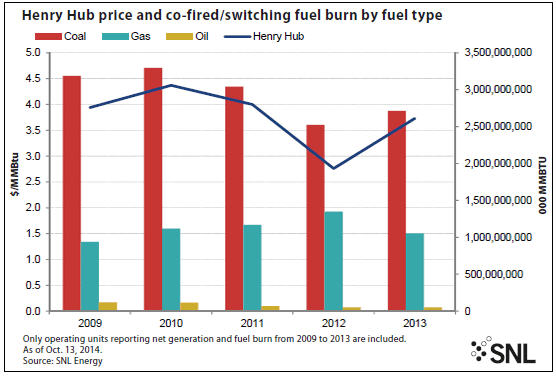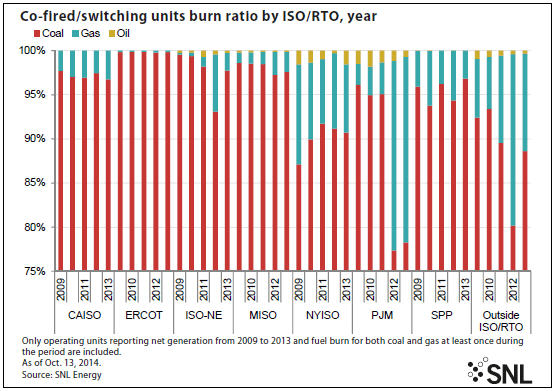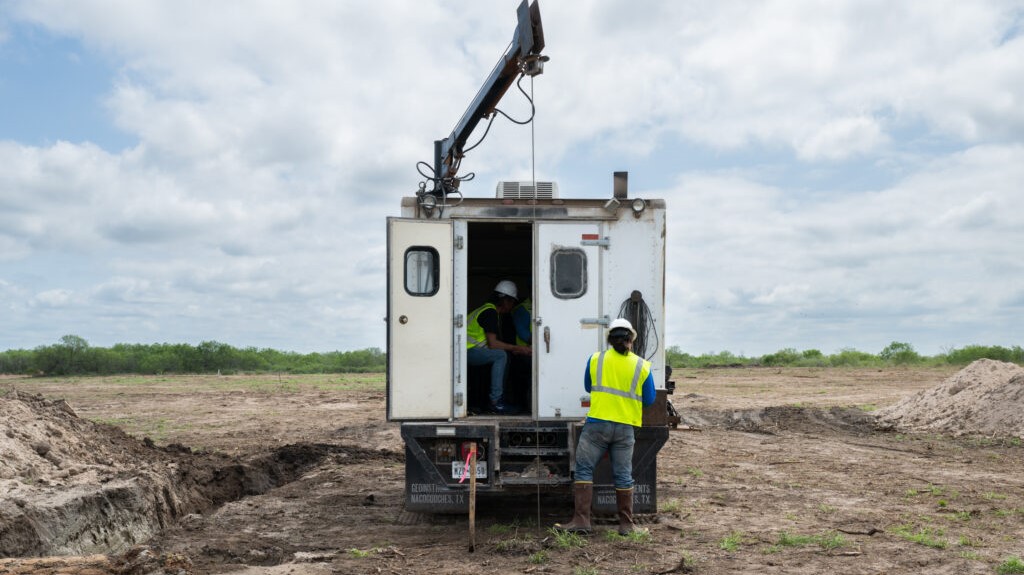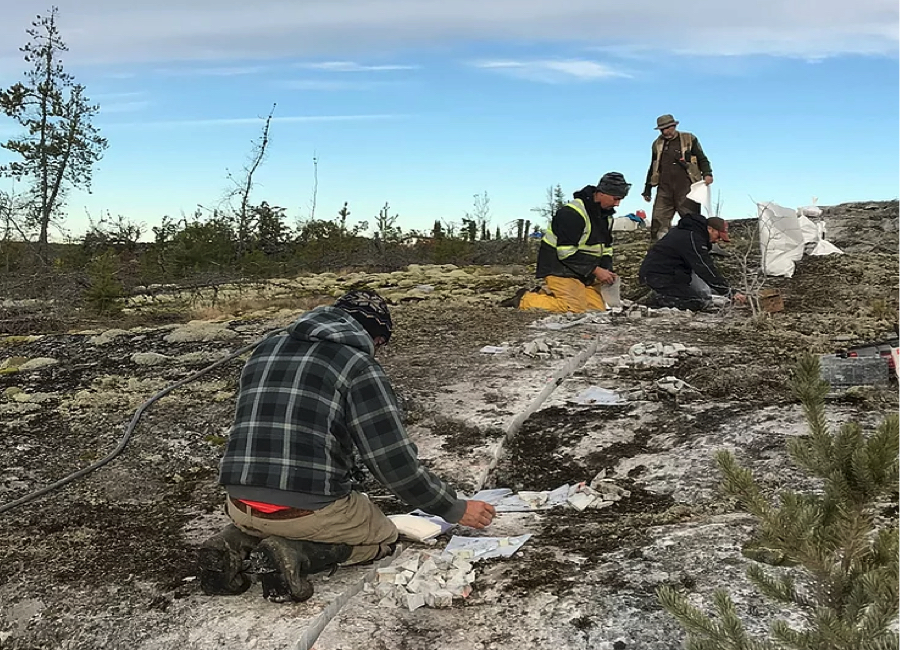Gas burn in dual-fuel units declines in favor of coal but not all RTOs revert
U.S. power generating units with co-firing or dual-switching capabilities experienced a decline in total gas burn of nearly 22% in 2013 year over year, but despite rising gas prices some RTOs continued their reliance on gas instead of coal.
Natural gas prices plummeted in 2012, enabling gas to take an unprecedented portion of the nation’s fuel mix. Co-fired and dual-switching units that were configured to burn gas were able to take advantage of this windfall. Aggregate gas burn for co-fired or dual switching units in 2012 was at the highest level over the past five years, with coal burn at its lowest within the same time period, according to SNL Energy data.
A co-fired unit is one capable of burning two or more fuels simultaneously to meet load, while a dual-switching unit is one that can replace one fuel type completely with another.
While gas prices remain at some of the lowest levels over the past decade, 2013 annual average spot prices at the Henry Hub rose 35%, to $3.73/MMBtu, compared to $2.76/MMBtu in 2012. With the increase in gas prices, coal recaptured some of its lost market share among co-fired and dual-switching units. Coal burn in 2013 for these units was up nearly 8% year over year, with gas burn for the units plummeting 22% during the same period.
For co-fired and dual-switching units that burned both coal and gas at least once within the five-year period of 2009-2013, total gas burn did not completely retreat to pre-2012 levels despite the fact that the 2013 annual average Henry Hub gas price approached 2011 levels. As a ratio of total fossil fuel burn, gas-fired fuel burn accounted for more than 5% in 2013, compared to almost 8% in 2012. Gas burn for the same subset of units from 2009 to 2011 accounted for roughly 3% each year.
Although aggregate coal and gas burn for co-fired and dual-switching units have come closer to the status quo experienced during 2009-2011, certain ISOs and RTOs have maintained 2013 gas burn well above historical levels.
In 2012, PJM experienced the largest shift in fuel burn to natural gas for co-fired and switching units that burned both coal and gas at least once within the five-year period of 2009-2013. Gas burn for the subset of units was up 420% year over year, accounting for more than 21% of fossil fuel burn in 2012, compared to just 4% in 2011.
Sustained gas usage within PJM could be partly due to the region’s proximity to cheaper natural gas flowing out of the Marcellus shale. Gas burn within the region barely gave back ground to coal in 2013, down 0.4 percentage point year over year to 21% of fossil fuel burn at co-fired and switching units.
Only co-fired and dual-switching units designated on the EIA 860 with unit level net generation over for 2009-2013 were included in total fossil fuel burn aggregates.
More News
{{ commodity.name }}
{{ post.title }}
{{ post.date }}






Comments